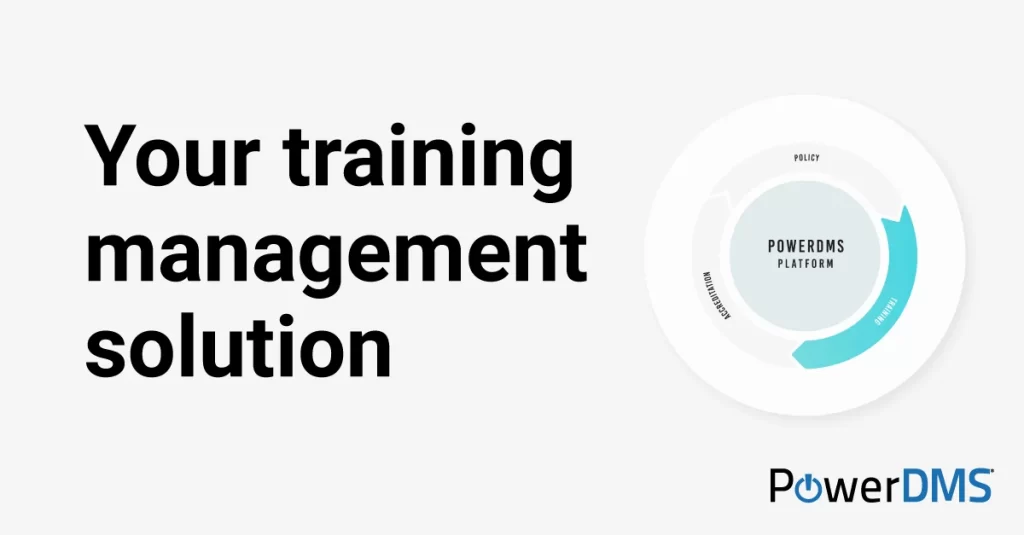Mastering PowerDMS Training
Discover the complete guide to PowerDMS training and learn how to use this powerful tool for policy management, compliance, and employee training. Perfect for organizations seeking streamlined digital solutions.

Digital transformation has redefined how organizations handle policy management, training, and compliance. PowerDMS stands out as a powerful tool for streamlining these processes. But to unlock its full potential, proper training is essential. In this article, we’ll walk you through everything you need to know about PowerDMS training—from the basics to advanced techniques—to help your team use it effectively and confidently.
What is PowerDMS?
PowerDMS is a cloud-based policy management and compliance platform designed to help organizations manage crucial documents, training, and accreditation processes. It is widely used by law enforcement agencies, healthcare providers, and other sectors where compliance is non-negotiable.
Why PowerDMS Training is Important
Implementing a tool like PowerDMS without adequate training can limit its benefits. Proper training ensures that users:
- Understand the platform’s features
- Know how to upload and manage policies
- Can assign and track employee training
- Ensure compliance across departments
- Use the system efficiently, saving time and resources
Key Components of PowerDMS Training
Understanding the User Interface
Before diving into features, it’s important to get comfortable with the layout of PowerDMS. Training typically starts with:
- Navigation overview
- Dashboard functions
- Menu customization
- User settings
A clear understanding of these basics sets the stage for more advanced learning.
Policy Management Training
The core function of PowerDMS revolves around policy and document management. Training modules generally include:
- Uploading and updating policies
- Linking documents to accreditation standards
- Setting review and approval workflows
- Managing version control and audit trails
This ensures policies remain up-to-date, accessible, and compliant.
Employee Training and Certification
PowerDMS allows administrators to assign training modules, track progress, and issue certifications. Essential training areas cover:
- Creating training courses
- Assigning roles and permissions
- Automating reminders for compliance deadlines
- Tracking and exporting training records
This feature is especially useful for regulated industries where proof of employee competency is required.
Accreditation Management
Many organizations use PowerDMS to align with industry standards. Training in this area covers:
- Attaching policies to accreditation standards (e.g., CALEA, Joint Commission)
- Preparing for audits with documentation
- Monitoring ongoing compliance
This feature supports long-term organizational integrity and credibility.
Benefits of Comprehensive PowerDMS Training
Enhanced User Adoption
Well-trained staff are more likely to embrace the platform, reducing resistance and increasing ROI.
Improved Policy Compliance
Training helps ensure every user understands how to access and acknowledge policies, which strengthens internal accountability.
Time and Cost Efficiency
PowerDMS automates several manual tasks. Training helps users leverage these tools, saving countless hours and administrative costs.
Accurate Reporting and Documentation
Proper training ensures you can generate accurate reports, crucial during audits or inspections.
Common Challenges and How Training Solves Them
Confusion Over Features
Solution: Structured training guides users step-by-step, reducing the learning curve.
Low Engagement
Solution: Interactive sessions and hands-on practice during training make learning more engaging.
Poor Implementation
Solution: When admins are trained to set up workflows and automate tasks, the system runs more smoothly and delivers better results.
Types of PowerDMS Training Available
Instructor-Led Training
Ideal for organizations that prefer real-time guidance and interactive Q&A sessions.
On-Demand Video Tutorials
These self-paced videos help teams learn at their own speed, anytime, anywhere.
Certification Courses
PowerDMS offers certification for advanced users who want to deepen their expertise and become internal champions.
Webinars and Workshops
Regularly scheduled events often focus on new features, compliance updates, and best practices.
Best Practices for PowerDMS Training Implementation
Identify Key Users Early
Not everyone in the organization needs to become a PowerDMS expert. Identify who will be managing policies, training assignments, and reports.
Start with Core Functions
Begin training with essential functions like uploading policies and tracking acknowledgments. Expand to advanced features gradually.
Customize Training by Department
Tailor sessions to meet the unique needs of each department. This ensures relevance and boosts engagement.
Offer Ongoing Support
Even after initial training, ongoing support through help desks, internal guides, or refresher courses is vital.
How to Create a PowerDMS Training Plan
Step 1: Assess Your Organization’s Needs
Start by identifying which features you plan to use most frequently. This will shape the training scope.
Step 2: Set Clear Goals
Define what successful training looks like. This might include full staff certification, 100% policy acknowledgment, or audit-readiness.
Step 3: Choose Your Training Format
Decide between in-person, virtual, or hybrid formats based on team availability and size.
Step 4: Schedule and Track Progress
Use PowerDMS itself to assign training tasks, set deadlines, and monitor completion rates.
Integrating PowerDMS with Other Tools
PowerDMS integrates with many other systems, such as HR software, learning management systems (LMS), and intranet portals. Proper training should include:
- How to link PowerDMS with external tools
- Data synchronization best practices
- Automating updates between systems
This ensures a seamless digital ecosystem that supports compliance and training efforts.
Conclusion
PowerDMS is more than just a policy management tool—it’s a complete compliance solution. But its success depends heavily on how well your team is trained to use it. From policy updates to employee training and audit readiness, PowerDMS training ensures your organization can run efficiently, stay compliant, and grow with confidence. A strong foundation in PowerDMS empowers teams to make the most of its capabilities—saving time, reducing risk, and improving accountability.
